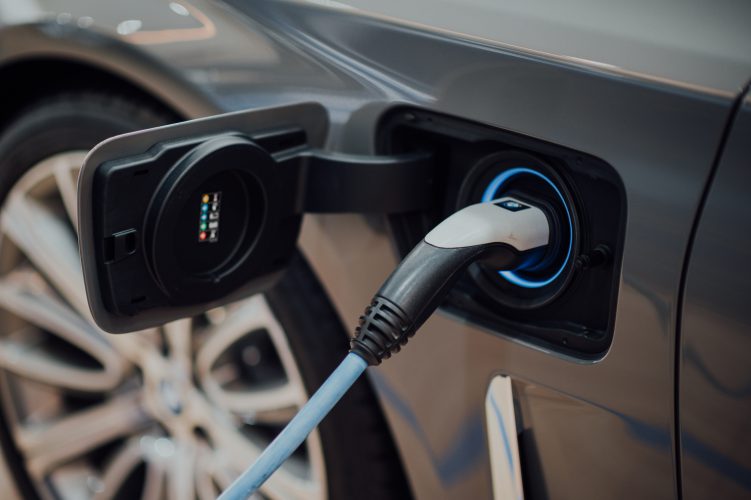Guest blog: Efficiency Tips for Electric Vehicle Owners

This website uses cookies to ensure you get the best experience on our website. cookie information

This guest blog post has been written by John Ellmore from Electric Car Guide. If you’d be interested in writing a blog for us, get in touch with Amy at Liftshare HQ.
Lift-sharing helps take cars off the road, cutting harmful emissions. Even more so if you’re sharing in an EV. Sign-up to Liftshare to start your sharing journey.
Before you even hit the road, understanding the best charging practices for your EV is important for keeping your battery healthy.
Consistently allowing your battery to drain completely can degrade the battery. It’s a good idea to start charging your EV before the battery level drops too low, preferably around 20-25%.
Instead of charging to 100% every time, consider charging your EV up to 80-90%. This practice can extend the overall lifespan of your battery. Many EV home chargers offer settings to cap charging at a certain level. Charging your EV when it still has a moderate charge level (e.g., 30-40%) is generally more efficient and healthier for the battery than waiting until it’s nearly empty.
Regular charging at home or work can be more beneficial than waiting for the battery to deplete significantly. Opportunistic charging, like using public chargers while shopping, can also be a good strategy to keep the battery at a healthy level.
Two critical factors in improving the range of an EV are preconditioning the battery and effectively using energy management features.
Preconditioning prepares your EV’s battery to operate at an optimal temperature before you start driving. This is particularly important in colder UK weather, where low temperatures can reduce battery efficiency. By bringing the battery up to an ideal operating temperature, preconditioning can improve range, and reduce energy consumption during the initial phase of your journey.
Many EVs allow you to set a departure time, enabling the vehicle to automatically start preconditioning using power from the grid while still plugged in. This means you’re not draining the battery for heating or cooling before you even begin your journey.
Some models offer remote preconditioning through a smartphone app, allowing you to start heating or cooling the vehicle ahead of your departure. For optimal results, precondition your EV while it’s plugged in, so you’re not using battery power. This is especially effective in winter, when heating demands are higher.
EVs come equipped with various features designed to optimise battery usage and extend driving range. These can include Eco modes, regenerative braking settings, and energy-efficient routing.
Eco mode typically adjusts various vehicle parameters to conserve energy. Utilising Eco mode during longer drives can significantly enhance your range.
Regenerative braking recovers energy that would otherwise be lost during braking and redirects it back to the battery. This happens automatically, if you brake suddenly you will trigger the car’s main brakes and this energy will be lost, so try to reduce speed slowly and efficiently when braking.
EVs are known for their instant torque, which can drain the battery quickly if used aggressively. Gentle acceleration may not be as much fun but it will conserve energy! Smooth, steady acceleration, without frequent stop-and-start, is more energy-efficient.
Higher speeds result in increased air resistance, which can significantly reduce your EV’s range. Keeping to a moderate, consistent speed is the most energy-efficient practice.
Extra weight requires more energy to move, so keeping your vehicle free from unnecessary heavy items can improve efficiency. In terms of aerodynamics, keeping windows closed at high speeds and removing roof racks when not in use can reduce air resistance and conserve energy.
Choosing the right route can significantly affect how much battery power you use. Routes with less traffic, fewer stops, and smoother terrain can help conserve energy.
For longer trips, you obviously need to plan your stops around charging station locations, ensuring that you always have enough charge to reach your destination or the next charging point. There are some great EV navigation apps and tools that are specifically designed for EVs, they provide real-time information on traffic and the location of charging stations.
Weather conditions play a significant role in the performance of electric vehicles, affecting everything from battery efficiency to driving safety. Lower temperatures can reduce battery efficiency, leading to reduced range. The battery may also take longer to charge.
Excessive heat can also affect battery performance and may lead to faster degradation over time. Preconditioning the battery, as mentioned earlier, can help mitigate these effects. Parking in shaded areas during hot weather and using insulated covers or garages in cold weather can also help maintain battery temperature.
Regular maintenance and periodic checks are essential for keeping your EV running efficiently. Regularly monitor the health of your EV’s battery – EVs should come with built-in diagnostic tools that can alert you to potential battery issues.
Keep your EV’s software up to date. Manufacturers often release updates that can improve battery management, efficiency, and even driving characteristics.
In colder months, check the battery’s performance in low temperatures and ensure that your EV’s heating system is functioning efficiently. In warmer weather, ensure that the cooling system is effective and that the battery is not exposed to excessive heat for prolonged periods.
Ready to try lift-sharing – whether in an EV or combustion engine car? Sign-up to Liftshare and add your journey.
Author Amy Young
on
See how Liftshare can help your organisation